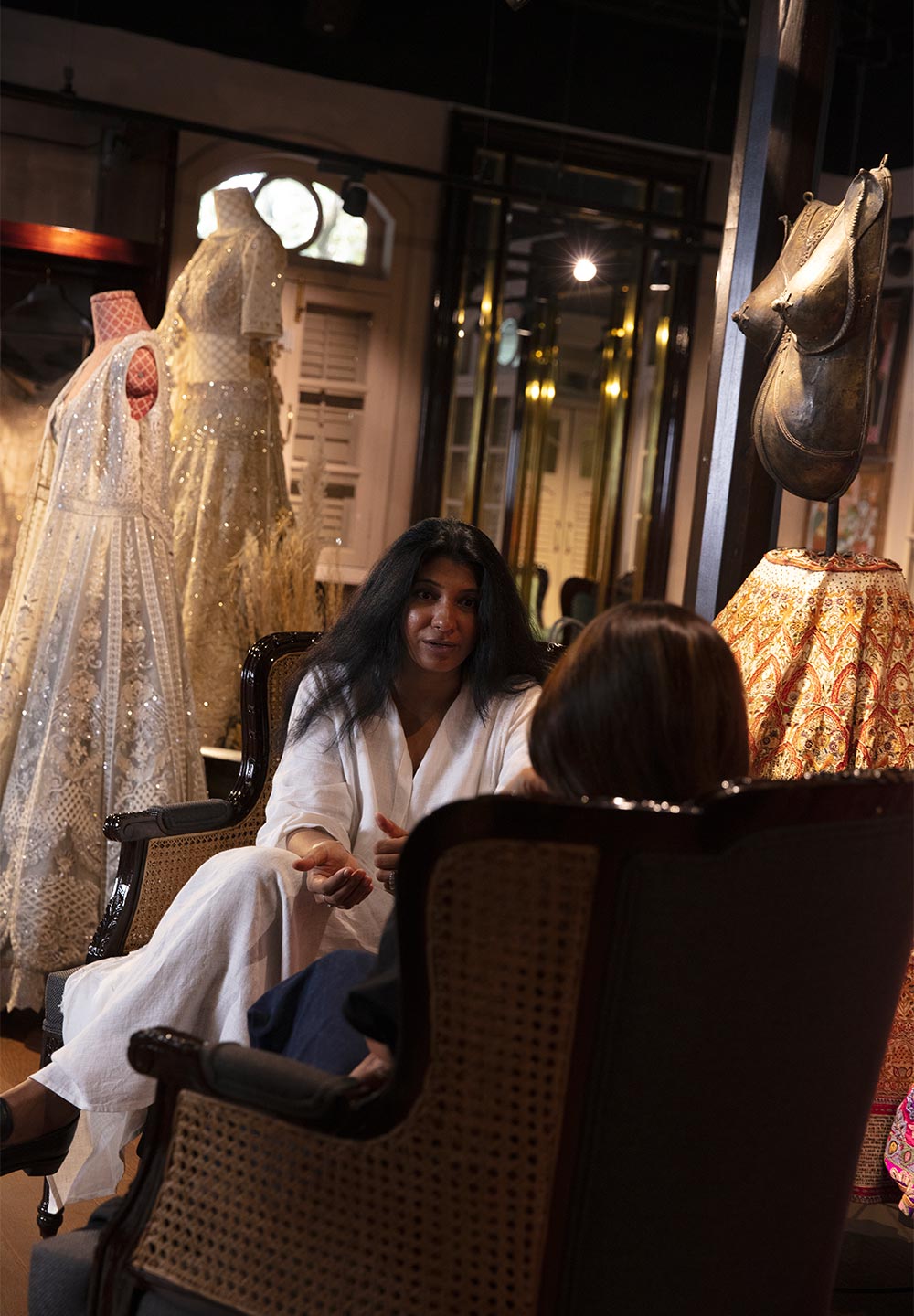


What is behind Karigari, and how do you create avenues for the Indian craft community to shine? Of course, the art of embroidery, jewellery design and stone setting all fall under the umbrella of Karigari. It is all about age-old traditions and techniques passed down through generations and making up India’s cultural and artistic fabric, “of which our Karigars are the backbone,” as Vogue India reported.
In this video, Monica Shah, co-Founder of Jade and the Chanakya school of craft, sat down with Rachana Singh, unit leader for Fashion Business and Postgraduate Programme at Istituto Marangoni Mumbai, to discuss the Indian cultural heritage through the lens of crafts and craftsmanship.
Let’s step back. On the one hand, inspired by India’s long tradition of craftsmanship, Jade was established by Monica Shah and Karishma Swali to make handicrafts relevant and create a new language of couture in India and from India. On the other hand, in 2016, Jade’s parent company – Chanakya, a family-run, leading fine crafts global atelier, established a foundation and a non-profit school dedicated to craft, culture and women’s empowerment. Today, this school has educated hundreds of women, giving them autonomy over their lives and future.
In short, the Chanakya School of Craft is the first of its kind to empower women from less privileged tribal backgrounds and communities by helping them transform their lives through art.

Monica Shah, co-Founder of Jade and the Chanakya school of craft, in conversation with Rachana Singh, unit leader for Fashion Business and Postgraduate Programme at Istituto Marangoni Mumbai
Shah and Singh talked about Karigari over the years, focusing on the long-standing traditions and their origins. They then highlighted the weaving techniques gradually disappearing in India. As the country has gone in and out of lockdowns over the past two years, the local crafts sector continues to be brutally impacted. With Shah discussing the relevance of creating contemporary textiles, the talk also explored the need to find a sustainable way to preserve local handicrafts.
“It is all about couture, craft, textiles, saris,” said Monica Shah when reflecting on the ideology of true luxury. Having established the couture brand Jade and the Chankya School of Crafts, Shah outlined the core values for preserving craftsmanship and heritage. There is a need to institutionalise and empower women artisans, especially in rural areas, to facilitate growth and maximise their potential for a new Renaissance.
The French fashion house Dior is a major partner of the Chankya School, as one of the first international haute couture brands to recognise and openly communicate the beauty and respect for Indian embroidery on the world stage.
From Indian wearable art to the expertise, innovation and passion of the country’s craft community, there is much to take from this interview.
Devika Reddy
A first-year student in Fashion Business Undergraduate Progression Course, Mumbai



